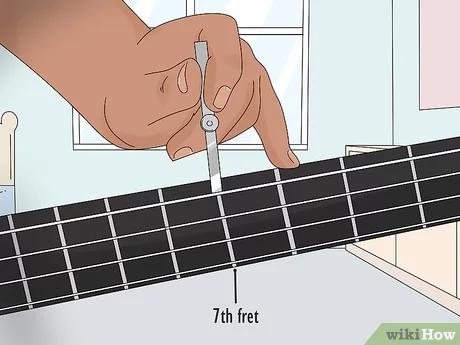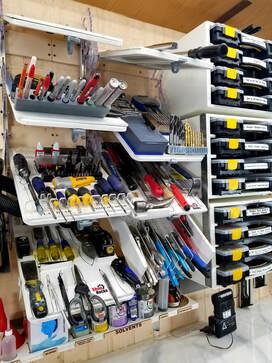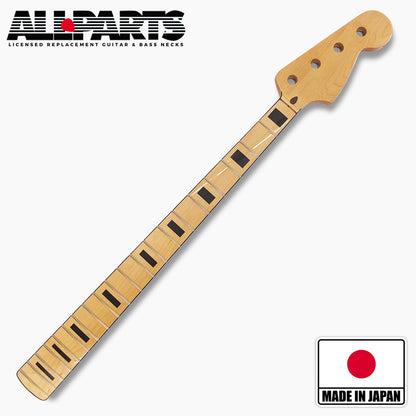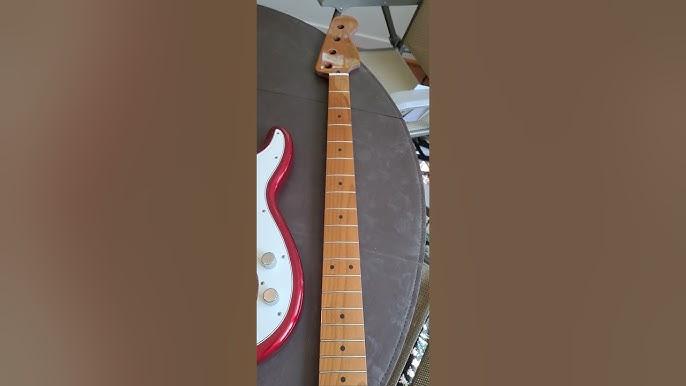Imagine standing on stage, your heart racing and your fingers poised on the strings of your beloved bass guitar. Suddenly, you hear a subtle but unsettling buzzing sound during a critical solo. That’s when you realize: it’s time to address the neck of your instrument. With years of experience in instrument design, I understand how vital a well-fitted neck is to the overall playability of the bass guitar. But did you know that nearly 30% of bass guitar neck replacements are due to improper fitting techniques? This guide is crafted to be your companion in navigating the nuances of bass guitar necks, from identifying when a replacement is necessary to learning how to perform the switch successfully on your own. Whether you’re struggling with persistent tuning issues or just curious about the different guitar neck types, we’ll delve into everything you need to know. Let’s dive into the details!
What is a Bass Guitar Neck?

As an engineer turned luthier, crafting a bass guitar neck is a meticulous yet deeply rewarding process. Each bass guitar neck is an essential element, not only influencing the sound but also reflecting the artistic design intrinsic to each instrument. Did you know that the neck of a bass guitar plays a crucial role in shaping its tone and feel? This pivotal component extends from the headstock to the point where it meets the body, and its quality can profoundly impact your playing experience. Whether the neck is wide or slender, made from maple or mahogany, it imbues unique tones and tactile sensations.
The craft of choosing between different guitar neck types is an art in itself. From bolt-on to neck-through designs, each style carries its distinct set of advantages and considerations. The shape and construction techniques influence how the bass sustains a note and resonates, ultimately delineating the signature feel under your fingertips. Whether you’re contemplating a bass guitar neck replacement or simply appreciating the intricacies of your instrument’s anatomy, understanding these nuances is paramount to maximizing the potential of your gear.
In the forthcoming sections, we’ll delve deeper into the essentials of neck replacement: when it becomes necessary, how the process unfolds, and the common issues you might encounter. These insights will empower you to maintain your bass guitar in its best possible condition, ensuring it consistently delivers the sound and playability you desire.
Why Replace a Bass Guitar Neck?

What if replacing your bass guitar neck could completely transform your playing experience? This intriguing question was at the forefront of my mind during an intimate journey with my beloved, yet aging bass. From personal experience, I’ve witnessed how a simple neck replacement can breathe new life into an aging instrument. As bass players, we often grow attached to our instruments, and rightly so—they become extensions of our musical soul. However, time and heavy use can wear down even the most treasured bass necks.
My venture into the world of aftermarket guitar necks opened my eyes to a plethora of options, from cheap replacement bass necks that offer budget-friendly solutions to custom bass necks tailored precisely to my needs and playing style. Seeking a neck with improved playability and enhanced tonal characteristics led me to discover the transformative potential that these components hold.
By opting to replace the neck, rather than the entire instrument, I found a sustainable way to revitalize its sound and feel, completely redefining my musical journey. This personal revelation leads naturally into the next consideration: Who should consider replacing a bass guitar neck? Understanding the benefits and potential of neck replacement can elevate your passion for treasuring your bass all over again.
Who Should Consider Replacing a Bass Guitar Neck?

Are you a guitarist struggling with playability issues? You may be one of many who can benefit from a neck replacement. Through my extensive experience with the New England Luthiers group, I’ve encountered countless players—from those just starting out to seasoned veterans—who have found renewed joy and playability with a bass guitar neck replacement. But who exactly should consider this pivotal change?
First and foremost, if your bass guitar has persistent intonation problems that can’t be solved with simple adjustments, a neck swap might be a smart move. Warped necks, due to environmental conditions or improper storage, can significantly hinder your instrument’s performance. I’ve seen *many cases* where a replacement made all the difference, transforming a neglected instrument into one that’s truly stage-ready.
Additionally, players seeking a specific neck profile that suits their personal playing style—or those looking to upgrade to high-quality materials—are prime candidates. Remember, your instrument should feel like an extension of yourself. Neck fitting is crucial, and a personalized approach can enhance playability and sustain. Don’t let an ill-suited neck stand in the way of your musical expression.
When to Replace or Adjust Your Bass Guitar Neck?

How often do you really pay attention to the state of your bass guitar neck? It might be more crucial than you think. A well-maintained neck is vital for ensuring optimal playability and sound quality.
In my years of experience, understanding when to adjust a neck is crucial; I’ve often seen musicians who wait too long to address issues, leading to more significant problems. *Truss rod adjustments* are typically the first line of defense when your neck feels off. If your strings are buzzing or the action feels too high, adjusting the truss rod can help correct the neck’s curvature and restore proper string alignment. But how do you know when simple adjustments aren’t enough?
Sometimes, persistent issues like warping or cracks necessitate *replacing the neck altogether*. This scenario might seem intimidating, but recognizing the signs early can save your bass and your playing experience. Trust in your instrument’s needs; your proactive care will ensure it performs beautifully for years to come. Remember, staying attuned to your bass’s neck is key—it might just be the next step in enhancing your musical journey.
How to Replace a Bass Guitar Neck
Gathering Necessary Tools and Materials

What tools do you think are essential for a successful bass neck replacement? Over the years, I’ve developed a checklist that ensures I have everything needed for a smooth neck replacement. Having the right tools and materials not only simplifies the process but also protects the integrity of both the old and new necks. Begin with fundamental tools like a screwdriver set, a capo, and string winder. Each of these is vital for removing the strings and detaching the old neck with precision.
Equally important are the materials that match the neck dimensions and neck materials specific to your bass model. Ensure you have the replacement neck ready, along with shims, if needed, to adjust for slight dimensional discrepancies. Double-check the neck material compatibility between the existing and the new neck to maintain the tonal quality of the instrument.
Gathering these tools and materials efficiently sets the groundwork for the following stages like removing the old neck and installing the new one. This preparation ensures a seamless transition and highlights the importance of meticulous planning in the broader context of replacing a bass guitar neck.
Removing the Old Neck

As I dove deeper into replacing bass guitar necks, I realized that neck removal techniques are pivotal for a smooth transition from old to new. Did you know that even a small mistake during neck removal can lead to damage? Let’s avoid that! Removing the old neck is a nuanced process and understanding these subtleties is essential. Bolt-on neck designs, which are prevalent, require a specific approach. I’ve learned that the technique for neck removal can differ greatly depending on the neck type, and understanding these nuances is key.
For bolt-on necks, the first step is loosening the strings to reduce tension. Next, unscrew the bolts attaching the neck to the body, taking care not to strip the screws. It is vital to support the neck during this process to prevent bending or cracking. My experience has taught me that a gentle, steady hand preserves the integrity of both neck and body. Once the neck is off, inspect the neck pocket for any debris or wear.
Successfully removing the old neck sets the stage for a seamless installation of the new neck. This foundational step, when executed with precision, ensures the replacement process flows smoothly into the next stage: installing the new neck. Applying these techniques prevents unnecessary issues later on, paving the way for a perfectly fitted neck ready to produce vibrant tones. Let’s continue to keep the music alive by giving our instruments the care they deserve.
Installing the New Neck

As an engineer, I focus on precise measurements to ensure the new neck fits perfectly, optimizing both sound and playability. What if the secret to your best sound lies in how you install your new neck? This pivotal step, *bass neck installation*, assures that your instrument feels and performs at its best.
Begin by aligning the new neck with the guitar body, ensuring the *neck fitting* is snug and secure. Pay attention to the alignment of the neck in relation to the bridge and pickups—these factors are crucial for maintaining proper intonation and string action. I meticulously use calipers to verify alignment, ensuring every *tiny fraction* is accounted for. The interaction between neck and body resonates through every note you play, linking *technical craft* with musical artistry.
With the neck seated perfectly, follow through with evenly torqued screws or bolts, preventing any variation in tension that can impact neck stability. This creates a seamless connection that delivers reliable tuning and vibrant sound, setting the stage for the final adjustments and testing that follow in the next section. Proper installation is not just about attachment; it’s about enhancing your bass’s voice.
Final Adjustments and Testing

Have you ever adjusted a guitar neck only to realize it feels completely different afterward? This is a moment when I truly understood that final adjustments are critical; I’ve found that the perfect neck curvature can greatly enhance an instrument’s playability. Once you’ve installed the new neck, it’s essential to focus on the truss rod adjustment. This not only refines the neck’s curvature to match your playing style but also ensures optimal string action and intonation.
Start by gently adjusting the truss rod, observing changes in curvature and playability. In my experience, making small, incremental adjustments helps avoid over-tightening and potential damage. After achieving the desired curvature, thoroughly test the instrument. Play each fret, listening for buzzing or tuning inconsistencies, and adjust the action as necessary. This meticulous process guarantees that your bass guitar not only looks impeccable but also performs flawlessly. As you wrap up these adjustments, you’ll find a newly invigorated sense of harmony between your instrument and your musical expression.
Common Issues with Bass Guitar Necks

What are the most frequent problems bass players encounter with their necks, and how can they be solved? It’s a question I often ponder, backed by countless hours spent refining my own instruments. Drawing from my extensive experience, I’ve identified the most common neck issues that many players face and how to address them.
The first and often most troublesome issue is neck curvature. Over time, environmental factors and string tension can cause the neck to bow or warp, dramatically affecting playability. This is where understanding the truss rod adjustment is crucial. The truss rod, an embedded metal bar, can be tightened or loosened to counteract this curvature. A well-placed adjustment can transform a warped neck into a perfectly aligned one, restoring both sound quality and comfort.
Another prevalent concern involves fret wear and unevenness, which can lead to buzzing and intonation issues. Regular maintenance, including periodic leveling and crowning of the frets, can alleviate these problems. Additionally, pay attention to environmental factors like humidity, which can exacerbate neck problems.
Addressing these common issues requires a blend of knowledge, the right tools, and, sometimes, a bit of trial and error. As we delve deeper into the intricacies of bass guitar necks, embracing these maintenance practices will ensure your instrument not only remains smooth and playable but also sounds exceptional, gig after gig.
Conclusion
Could a new neck or *adjustment* be the key to unlocking your potential as a bassist? As I summarize the importance of a well-fitted bass neck, I reflect on how transformative these changes can be for musicians. A proper **bass guitar neck replacement** not only addresses wear and tear but can also enhance playability, elevate your sound, and sync your instrument with your unique style. Identifying when adjustments are needed is crucial in ensuring longevity and optimal performance. Whether replacing or adjusting, the right fit nurtures your musical expression. Armed with this comprehensive guide, you’re ready to tackle neck issues with confidence and precision.
FAQs

R.M. Mottola, an engineer-turned-luthier, revolutionizes stringed instrument design with his deep focus on acoustics and ergonomics since 1994. As editor of the Savart Journal and a key contributor to American Lutherie, Mottola merges science with artistry in lutherie. He enriches the field with his extensive knowledge, shared through his Liutaio Mottola website, making him a beacon in the world of modern instrument craftsmanship.
